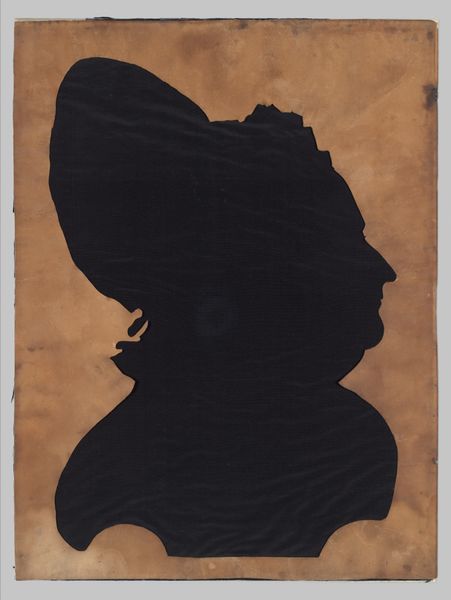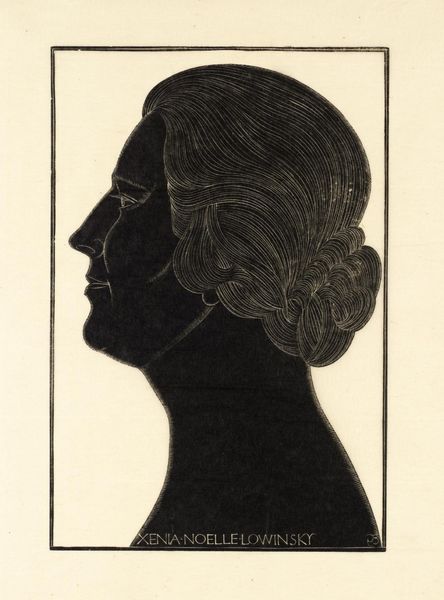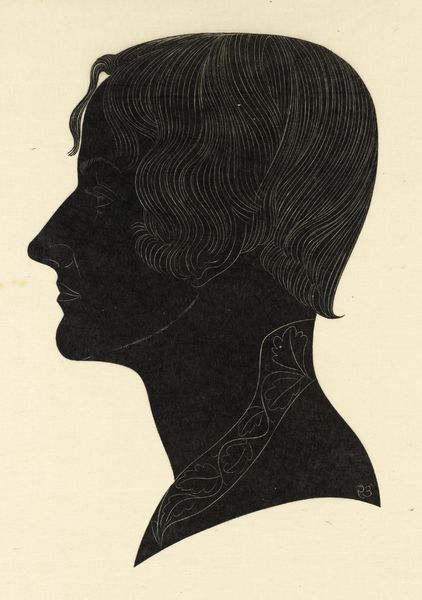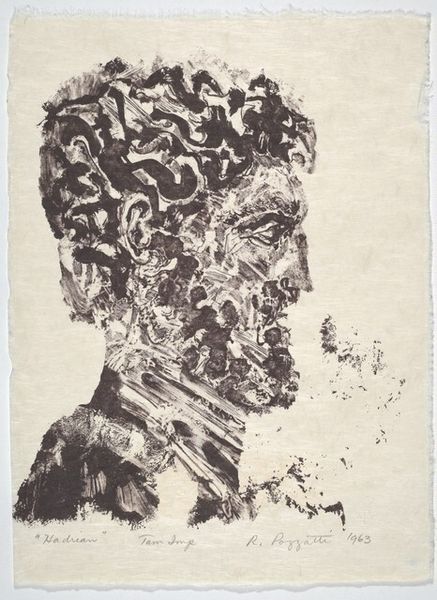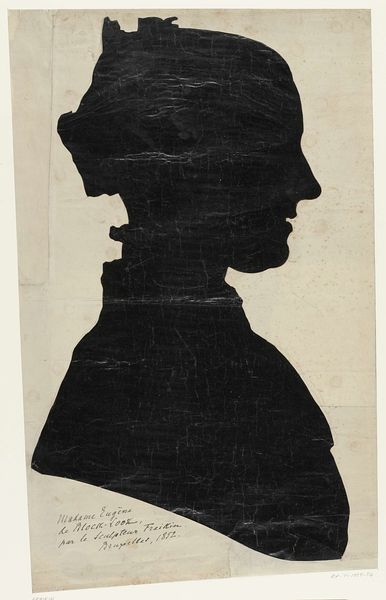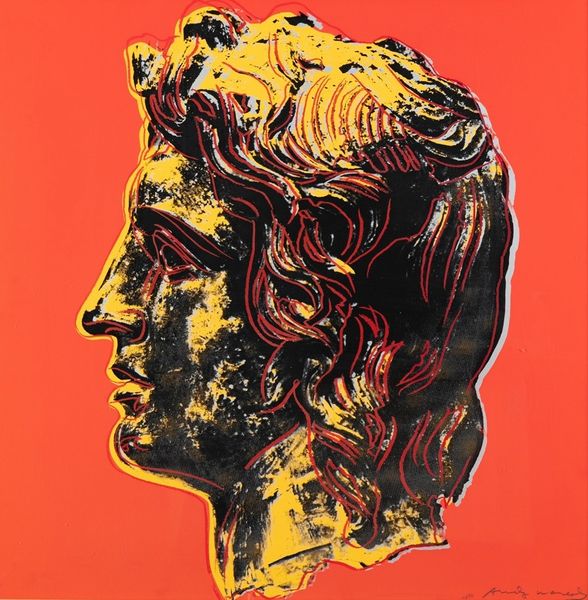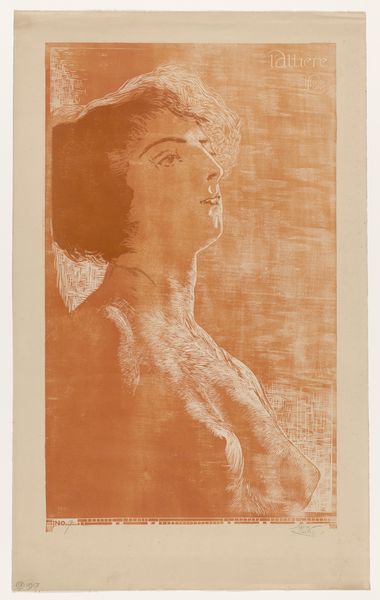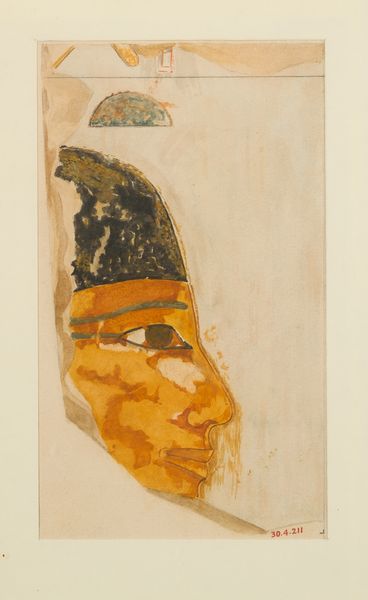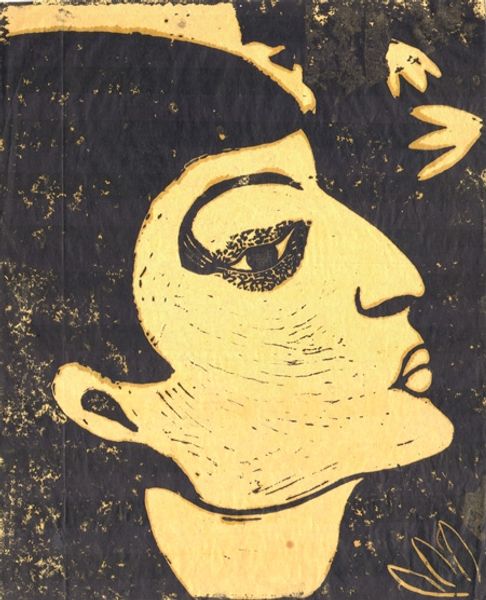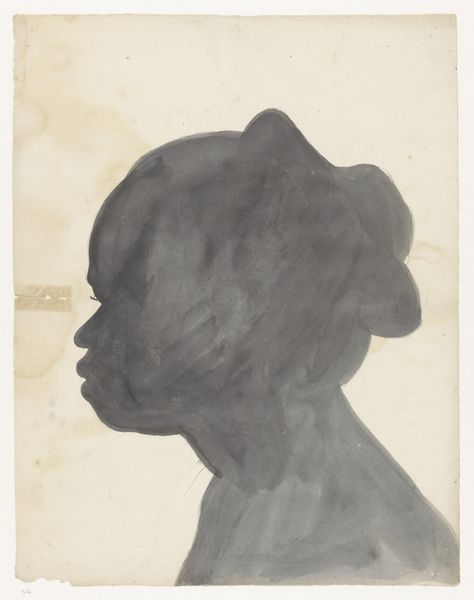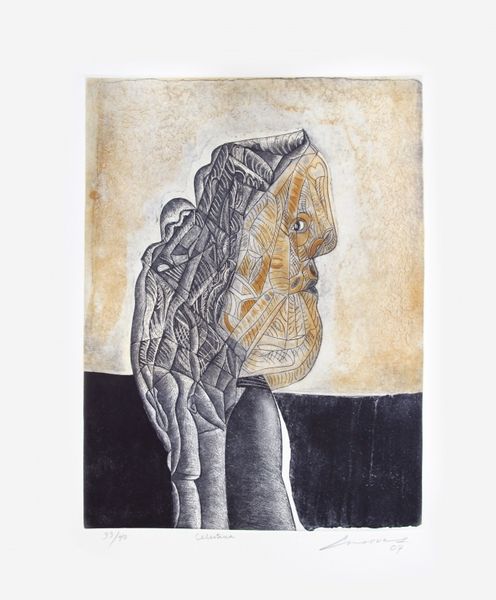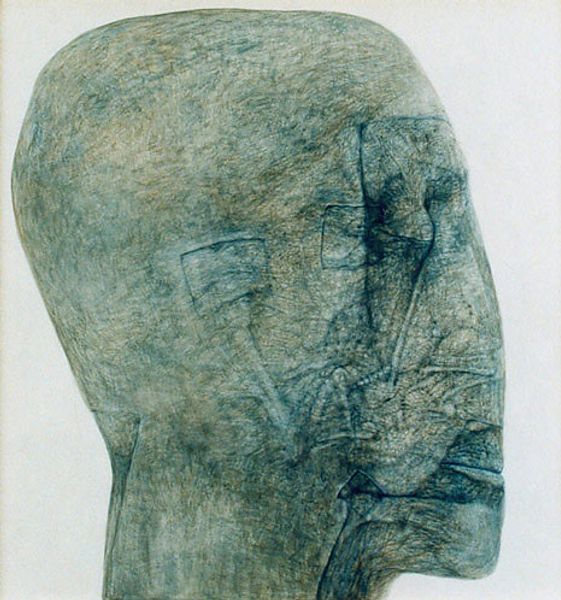
oil-paint
#
portrait
#
oil-paint
#
pop-art
Copyright: Modern Artists: Artvee
Editor: Here we have Andy Warhol's "Dione," created around 1957 using oil paint. The image of the golden, mottled figure against the bright orange background has an intriguing texture and immediately draws my eye. How should we interpret its visual impact? Curator: Focusing on the structural elements, observe how the solid background delineates the figure’s contours, creating a stark contrast that enhances the silhouette. The cracking and veining across the portrait’s surface? That textural complexity plays against the smoothness of the backdrop. Note too how Warhol emphasizes line – see the sinuous quality defining the hair and neck. The interplay of these contrasting elements generates a compelling visual dynamic, wouldn’t you agree? Editor: I do. The lines do make it seem almost like a print, and the cracking gives it a weathered, antique quality. It's a surprisingly formal composition for something considered Pop Art. Does the medium itself—oil—play a role in achieving these textures? Curator: Absolutely. Oil paint’s inherent viscosity allows for manipulation, and Warhol’s technique, seemingly haphazard, introduces chance and indeterminacy. This challenges the notion of perfect representation, pushing us to reconsider the painted surface. It’s more than just a picture of a woman; it’s a complex interplay between representation and material reality. Editor: I see what you mean! It’s easy to get caught up in what it *is*, but overlooking what it *does*. I’ll certainly be paying more attention to the formal elements from now on! Curator: Indeed. A closer attention to the interplay of texture, color, and line reveals deeper understanding of art itself.
Comments
No comments
Be the first to comment and join the conversation on the ultimate creative platform.
